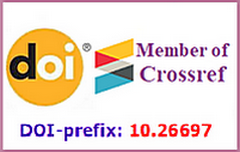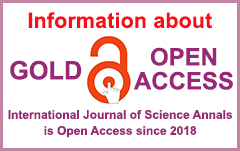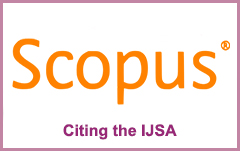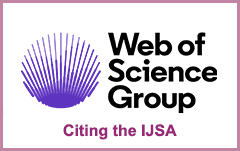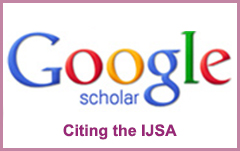Implementation of Interactive Teaching Methods in the Process of Developing Professional-Communicative Proficiency of Future Pilots
Kumpan O. O.1, Kharlamova L. S.1
| 1 Flight Academy of National Aviation University, Ukraine |
Abstract
Background and Aim of Study: The research deals with the methods of interactive teaching techniques implementation and their effectiveness assessment during professional language training of future pilots. These techniques are not only aimed to improve language proficiency, but ensure professional expertise and its implementation in the future professional activity. The aim of the study: to define professional language proficiency, to determine and describe interactive teaching methods able to facilitate in developing language skills that meet ICAO language proficiency requirements.
Material and Methods: The systematic collection and analysis of all subjective and objective information necessary to define and validate defensible curriculum purposes that satisfy the language learning requirements of students within the context of particular institutions that influence the learning and teaching situation are made. Holistic descriptors and language proficiency assessment scale developed by ICAO are studied. Innovative teaching approaches and methods are studied and implemented. Interactive teaching techniques are implemented and the results are assessed during the training course on Aviation English.
Results: Recent studies have proved that methods based on interaction considerably increase students’ motivation, willingness to learn, improve and expedite language skills acquisition and facilitate in their successful implementation in real situations.
Conclusions: The demands for language proficiency defined by ICAO are not limited by merely knowledge of a set of grammar rules, vocabulary and ways of pronouncing sounds. It is a complex interaction of that knowledge with a number of skills and abilities, which can be developed through interactive teaching methods.
Keywords
language proficiency, interactive learning, interactive methods, role play, case study, brainstorming, multimedia learning
References
Alderson, J. C. (2005). Diagnosing foreign language proficiency: The interface between learning and assessment. New York, NY: Continium.
Angelo, T. A., & Cross, K. P. (1993). Classroom assessment techniques (2nd ed.). San Francisco: Jossey-Bass.
Bean, J. C. (1996). Engaging ideas: The professor’s guide to integrating writing, critical thinking, and active learning in the classroom. San Francisco: Jossey-Bass.
Becta. (2003). What the research says about interactive whiteboards. Coventry, UK: British Educational Communications and Technology Agency (Becta).
Blake, M. E., & DeVries, B. A. (2004). Developing speaking skills. Integrating the language art (3rd ed.). Scottsdale, AZ: Holcomb Hathaway Publishers.
Brainstorm. (2019). Cambridge Dictionary. Retrieved August 10, 2019, from https://dictionary.cambridge.org/dictionary/english/brainstorm
Gonzalez, J. (2015, October 15). The big list of class discussion strategies. Cult of Pedagogy. Retrieved from https://www.cultofpedagogy.com
Harwood, N. (Ed.). (2010). English language teaching materials. Cambridge University Press.
Hayes, J. R. (1989). The complete problem solver. Hillsdale, NJ: Lawrence Erlbaum Associates.
Jolliffe, L. B. (1991). Industry’s team approach to classroom projects. Journalism Educator, 46(2), 15–24.
Lea, S. J., Stephenson, D., & Troy, J. (2003). Higher education students’ attitudes to student-centered learning: Beyond educational bulimia. Studies in Higher Education, 28(3), 321–334. doi:10.1080/03075070310000113432
Knapen, R. (2018, June 13). Re: 20 interactive teaching activities for in the interactive classroom [Web log message]. Retrieved from https://www.bookwidgets.com/blog/2018/06/20-interactive-teaching-activities-for-in-the-interactive-classroom
Mayer, R. E. (2009). Multimedia learning (2nd ed.). New York: Cambridge University Press. doi:10.1017/CBO9780511811678
Mayer, R. E. (2005). The Cambridge handbook of multimedia learning. In R. E. Mayer (Ed.), Cognitive theory of multimedia learning (pp. 31–48). University of California: Santa Barbara.
McGlynn, A. (2001). Successful beginnings for college teaching. Madison: Atwood.
Melnyk, Yu. (2017) Study of trends of students’ demand for the formation of competences by higher educational institutions. Science and Education, 5, 128–134. doi 10.24195/2414-4665-2017-5-22
Melnyk, Y., & Pypenko, I. (2017). Innovative potential of modern specialist: The essence and content. In Yu. B. Melnyk (Ed.), Psychological and pedagogical problems of modern specialist formation (pp. 9–16.). Warsaw: ANAGRAM; Kharkiv: KRPOCH. doi:10.26697/9789669726094.2017.9
Melnyk, Yu. B., & Pypenko, I. S. (2018). Training of future specialists in higher education institutions. International Journal of Science Annals, 1(1-2), 4–11. doi:10.26697/ijsa.2018.1-2.01
Morrison-Shetlar, A. I., & Marwitz, M. R. (2001). Teaching creatively: Ideas in action. Eden Prairie: Outernet.
Nickolaeva, N. I., & Sopova, A. S. (2015). Formirovanie professionalno-kommunikativnoj kompetentnosti budushhih voennyh letchikov v processe obuchenija aviacionnomu anglijskomu jazyku [Forming of future pilots’ professional-communicative competence in the process of teaching Aviation English]. Molodoi uchenyi – Young scientist, 13(93), 675–678. [in Russian]
Norris, J. M. (2006). The why (and how) of assessing student learning outcomes in college foreign language programs. Modern Language Journal, 90(4), 590–597. doi:10.1111/j.1540-4781.2006.00466_2.x
Pometun, O., & Pirozhenko, L. (2002). Interaktyvni tekhnolohii navchannia: Teoriia, dosvid [Interactive teaching technologies: Theory, experience]: Kyiv: A.P.N. [in Ukrainian]
Pometun, O., & Pirozhenko, L. (2004). Suchasnij urok. Іnteraktivnі tehnologії navchannja [Modern Lesson. Interactive technologies of learning]. Кyiv: Vidavnictvo A. S. K. [in Ukrainian]
Reinders, H., & White, C. (2010). The theory and practice of technology in materials development and task design. In N. Harwood (Ed.), English Language Teaching Materials: Theory and Practice (pp. 58–80.). Cambridge: Cambridge University Press.
Silberman, M. (1996). Active learning: 101 strategies to teach any subject. Boston: Allyn and Bacon.
Trace, J., Hudson, T., & Brown, J. D. (2015). An overview of language for specific purposes. In J. Trace, T. Hudson, & J. D. Brown (Ed.), Developing Courses in Languages for Specific Purposes (pp. 1–23). Honolulu: University of Hawaii.
VanGundy, A. (2005). 101 Activities for teaching creativity and problem solving. San Francisco: Pfeiffer.
Veen, W., Lam, I., & Taconis, R. (1998). A virtual workshop as a tool for collaboration: towards a model of telematic learning environments. Computer & Education, 30(1-2), 31–39
Watkins, R. (2005). 75 e-Learning Activities: Making Online Learning Interactive. San Francisco: Pfeiffer.
Widdowson, H. G. (1984). Explorations in applied linguistics 2. Oxford: Oxford University Press.
Yee, K. (2000). Language teaching methods.
Zimnjaja, I. A. (2003). Kljuchevye kompetencii – novaja paradigma rezul’tata obrazovanija [Primary competences – a new paradigm of the education result]. Vysshee obrazovanie segodnja – Higher Education Today, 5, pp. 3–10 [in Russian]
Information about the author:
Kumpan Olena Oleksandrivna – https://orcid.org/0000-0003-0296-7082; Senior Lecturer; Senior Teacher of the Foreign Languages Department; Flight Academy of National Aviation University; Kropyvnytskyi, Ukraine.
Kharlamova Liliia Stepanivna – https://orcid.org/0000-0002-1892-1815; Candidate of Pedagogical Sciences; Associate Professor of Foreign Languages Department; Flight Academy of National Aviation University; Kropyvnytskyi, Ukraine.
Cite this article as:
APA
Kumpan, O. O., & Kharlamova, L. S. (2019). Implementation of Interactive Teaching Methods in the Process of Developing Professional-Communicative Proficiency of Future Pilots. International Journal of Science Annals, 2(1-2), 12–18. https://doi.org/10.26697/ijsa.2019.1-2.02Harvard
Kumpan, O. O., & Kharlamova, L. S. , 2019. "Implementation of Interactive Teaching Methods in the Process of Developing Professional-Communicative Proficiency of Future Pilots". International Journal of Science Annals, [online] 2(1-2), pp.12–18. viewed 30 November 2019, https://culturehealth.org/ijsa_archive/Vol._2,ijsa_No_1-2,_2019-2.pdfVancouver
Kumpan O. O., Kharlamova L. S. Implementation of Interactive Teaching Methods in the Process of Developing Professional-Communicative Proficiency of Future Pilots. International Journal of Science Annals [Internet]. 2019 [cited 30 November 2019]; 2(1-2):12–18. Available from: https://culturehealth.org/ijsa_archive/Vol._2,ijsa_No_1-2,_2019-2.pdf https://doi.org/10.26697/ijsa.2019.1-2.02








